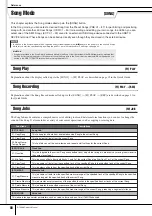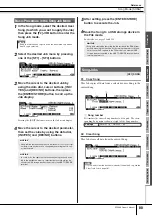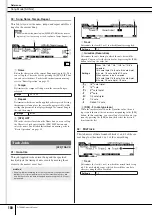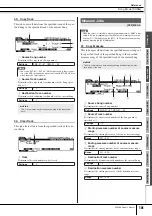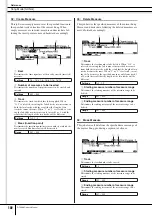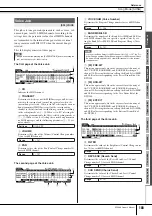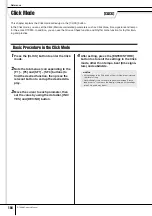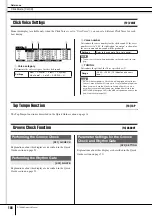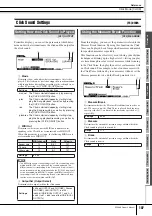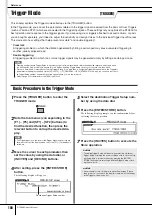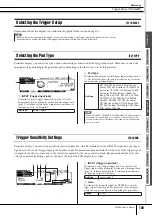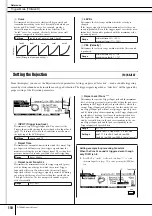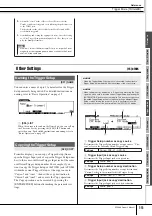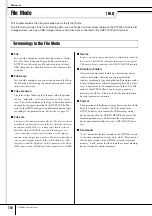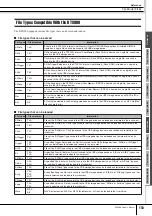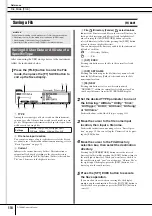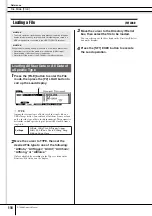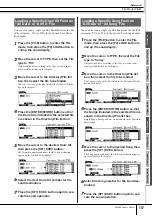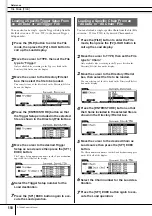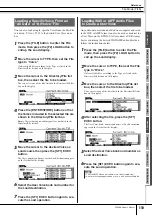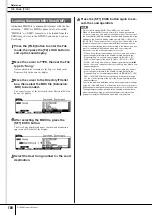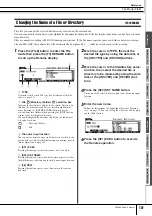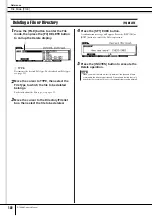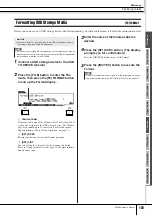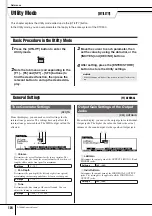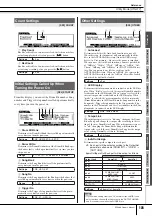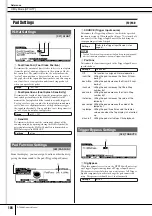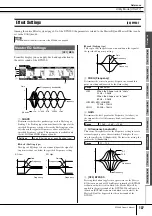
Reference
112
DTX900 Owner’s Manual
File Mode
[FILE]
This chapter explains the File mode called up via the [FILE] button.
The File mode provides tools for transferring data (such as Songs and User Voices) between the DTX900 and external
storage devices, such as a USB storage device or hard disk drive connected to the USB TO DEVICE terminal.
Terminology in the File Mode
■
File
Just as with a computer, various data types such as Drum
Kit, User Voice, Song and Trigger Setup created on the
DTX900 can be treated as a file and saved to an external
USB storage device. Each file features a file name and file
extension.
■
File Name
Just as with a computer, you can assign a name to the file in
the File mode. Files having the same name cannot be saved
in the same directory.
■
File extension
The three letters following the file name (after the period)
such as “.mid” and “.wav” are referred to as a file “exten-
sion.” The extension indicates the type of file and cannot be
changed by the panel operation of the DTX900. The File
mode of the DTX900 supports ten different extension types,
according to the particular data. For details, see page 113.
■
File size
This refers to the memory amount of the file. The file size is deter-
mined by the amount of data saved to the file. Generally, the size of
an audio file (AIFF, WAV, etc.) is much larger than the size of a
MIDI file. On the DTX900, the size of file including the User
Voices (consisting of audio signals obtained via the Sampling
function) is much larger than other files. File sizes are indicated in
conventional computer terms by B (Byte), KB (Kilo Byte), MB
(Mega Byte) and GB (Giga Byte). 1KB is equivalent to 1024 Byte,
1MB is equivalent to 1024KB, and 1GB is equivalent to 1024MB.
■
Device
Refers to a memory storage unit (such as a hard disk) to which the
file is saved. The DTX900 can handle and mount various types of
USB storage devices connected to the USB TO DEVICE terminal.
■
Directory (Folder)
This is an organizational feature on a data storage device
(such as hard disk), allowing you to group data files
together according to type or application. Directories can be
nested in hierarchical order for organizing data. The “direc-
tory” is equivalent to the computer term “folder.” The File
mode of the DTX900 allows you to assign a name to a
directory as with files. Please note that the directory name
does not contain an extension.
■
Format
The operation of initializing a storage device (such as a hard
disk) is referred to as “format.” The File mode of the
DTX900 allows you to format the USB memory storage
device connected to the USB TO DEVICE connector. The
format operation erases all data from the target memory
device and automatically creates an “AUTOLOAD” direc-
tory.
■
Save/Load
“Save” means that the data created on the DTX900 is saved
to an external memory device as a file, while “Store” means
that the data created on the DTX900 is stored to internal
memory. “Load” means that the file on the external memory
device is loaded to internal memory.

